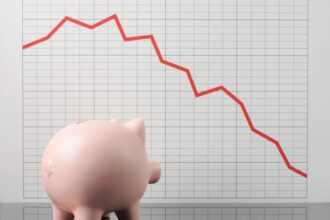Retirement planning is probably the most common topic that I get questions about, whether on our financial coaching line or our group workshops and webcasts. I find there are quite a few recurring myths that could be hurting people’s ability to plan properly for their retirement. Here are 10 of the ones I hear most often:
1. It’s too early to start saving for retirement. I particularly hear this from young people and it’s unfortunate for a few reasons. First, with the decline in the number of traditional pension plans and potential cuts in government programs like Social Security and Medicare, young people will likely need to save even more than previous generations. Second, they have the most to gain from being able to invest more aggressively and benefit longer from the magic of compounding growth. Finally, the financial habits that young people develop early in their careers can stick with them throughout the rest of their lives.
If you’re just starting your career, try to contribute at least enough to get your employer’s match so you don’t leave that free money on the table, even if it means having to share living expenses with a roommate for a bit longer. You can then begin to slowly increase your contributions over time as your income grows. Your retirement plan may even have a contribution rate escalator that will do that for you automatically.
2. I’ll need about 80% of my current income in retirement. This may be true for many people, but retirement needs can vary dramatically based on your particular circumstances. You may need less than 80% if you’re saving a lot for retirement, will have your mortgage paid off, or are planning to downsize or move to a lower cost area. On the other hand, you may need more than 80% if you want to spend more time traveling or engaging in other expensive activities.
3. I won’t see a dime from Social Security. This myth comes from the fact that the Social Security trust fund has been projected to run out of money in 2037. The good news is that doesn’t mean there won’t be any money at all in the program. After all, millions of people will still be paying taxes into the system. Unfortunately, it’s projected that there will only be enough money to pay about 75-80% of the promised benefits.
4. If I contribute to a retirement plan, my money will be all tied up. This myth is often tied to the first one since young people are typically also saving for emergencies, a home purchase, and possibly going back to school. One of the best solutions for someone in this situation is a Roth IRA since the sum of the contributions can be withdrawn at any time and for any reason without tax or penalty. Whatever you don’t need to withdraw will then grow and become tax-free after age 59 1/2 (as long as the account has been open for at least 5 years).
If you already have a sizeable balance in your employer’s retirement plan, you may still be able to access this money tax and penaltyfree by taking a loan. Unlike credit cards and home equity loans, there is no credit check and the interest goes back into your own account. As a last resort, you may also be able to request a hardship withdrawal. Just be aware that these are limited to certain circumstances, are subject to taxes and early withdrawal penalties, and cannot be paid back. While it’s best not to touch your retirement money at all, knowing these options are available can help make you feel more comfortable about contributing to these accounts.
5. I should automatically roll my retirement account into an IRA when I leave a company. Many financial advisors like to give this impression since most of them make money managing IRAs or selling the investments in them, but there are several reasons why it isn’t always a good idea. First, if you retire during or after the year you turn 55, you would be able to make penalty-free withdrawals from that employer’s retirement plan immediately, while you’d have to wait until age 59 1/2 with an IRA. Second, if you have company stock in your retirement plan, you may get favorable tax treatment by transferring the stock to a brokerage account rather than rolling it into an IRA. Finally, you may have access to lower cost investments and advice services than with an IRA.
6. I can’t contribute to an IRA because I have a retirement plan at work. This myth comes from the fact that if you’re covered by an employer’s retirement plan, there are income limits in being able to deduct traditional IRA contributions. Even if you don’t qualify for the deduction, you can still make nondeductible contributions to a traditional or possibly Roth IRA. That brings us to…
7. My income is too high to put money in a Roth IRA. You may earn too much to contribute to a Roth IRA, but there is a way to get money into a Roth IRA through the backdoor. Since there’s no income limit on Roth IRA conversions, you can contribute to a traditional IRA and then convert it into a Roth. The only catch is that if you have other pre-tax IRAs, you’ll have to pay a tax on the converted IRA on a pro-rata basis. You can avoid this by rolling the pre-tax IRAs into your employer’s retirement account.
8. My tax rate will be the same in retirement, so I don’t get any benefit from tax-deferral. While it’s true that many people will be in the same tax bracket in retirement, that doesn’t mean you won’t benefit from deferring taxes. You may be in the same bracket but pay a lower effective rate in retirement. If you make pre-tax contributions, you’re contributing money that would otherwise be taxed at your highest marginal tax bracket, but when you withdraw that money in retirement, some of that money is likely to get taxed at the lower brackets, providing for a lower average rate. Even if you pay the same rate when you retire, you’ll still benefit from all the extra earnings on the money that would have gone to taxes each year.
9. I can be well-diversified by just spreading money around all the options in my retirement plan. Depending on what those options are, you may not be as diversified as you think. For example, let’s say your plan has 5 options: a company stock fund, 3 other stock funds, and a bond fund. If you spread your money equally, you’d have 20% in bonds and 80% in stocks, with 20% in company stock. That’s a pretty aggressive mix and it’s generally a good idea not to have more than 10-15% in any one stock, especially if it’s your employer’s since your job is already tied to your company’s fortunes.
You can actually be well-diversified with as little as one fund by picking a one-stop shop asset-allocation fund like a target date retirement fund. These funds diversify your money for you based on how long you have until retirement. You can also build a customized portfolio based on your particular risk tolerance and time frame using a worksheet like this.
10. I should invest my retirement account in the top-performing funds. Picking the top-performing funds may seem intuitive but it turns out that not only is past performance a poor indicator of future performance, it may actually be an indicator of poor future performance. Standard and Poor’s does an ongoing study in which they look at the top 25% of mutual funds in various categories and see how they did 5 years later. Their latest report continues to show that these top performers are actually less likely than average to continue being a top performer.
Instead of looking at past performance, look at costs when comparing similar funds. Numerous studies have shown a pretty good correlation between low costs and superior investment results. Morningstar called them the best predictor of future returns.
Want to avoid these types of myths in your retirement planning? Consider consulting with a qualified and unbiased financial planner. Your employer may even offer access to one for free through a workplace financial wellness program.
Read the full article here










